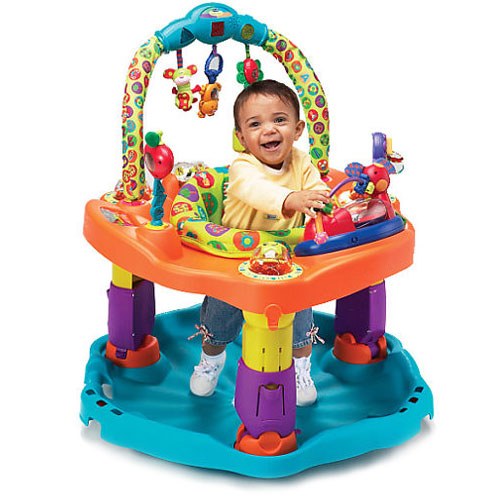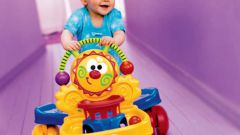Instruction
1
Start to accustom the child to a Walker only if he learned steadily and long to sit without support. Even better, if the baby is able to stand up (not before 6 months). This is because the main burden falls on the spine: if it is not strong enough, the use of a Walker can lead to scoliosis and other effects.
2
Put baby in a Walker. Of course, it nesrazu understand what they meant. So you need at first a little bit to help in the development of a new "transport". To do this, take his legs with his hands and toss them directly on the floor, imitating, thereby, walk away.
3
Put near the childsitting in the Walker, his favorite or a new toy. He will be interested and wish to get closer to her to see. If the baby still does not move - help him by moving the legs a bit or pushing walkers. But don't overdo it with the acceleration, otherwise the child may get injured.
4
Gradually move away from the childsitting in the Walker, and invite him to her. As soon as he starts to approach again a little move away. Be sure to praise baby for success, you can caress him, hug, telling me, when he finally overcome the distance between you.
5
If you have older kids, use of as "lure". After all, they love to play with each other and your little one will strive to get close to the brother or sister as close as possible to take part in the game.
Note
Walking in the Walker is significantly different from independent walking. After all, the child can push off from the support only the toes, as a result, it remembers the correct position of the foot during the step. In addition, during normal walking, the child learns to keep the balance, which does not occur when using the Walker. In the latter case, the baby holds the front panel.
Walkers protect baby from bumps and drops, but can you call it advantage?! After all, for a toddler the experience of falls is vital. How else will he learn to group or protect themselves from injury when falling. Walker child can learn the danger of collision with the surrounding objects, and he would need more time.
For these and many other reasons pediatricians deny the need of a Walker.
Walkers protect baby from bumps and drops, but can you call it advantage?! After all, for a toddler the experience of falls is vital. How else will he learn to group or protect themselves from injury when falling. Walker child can learn the danger of collision with the surrounding objects, and he would need more time.
For these and many other reasons pediatricians deny the need of a Walker.
Useful advice
Let your child run around in the Walker no more than a couple times a day for approximately 30 minutes (no more than an hour a day).

